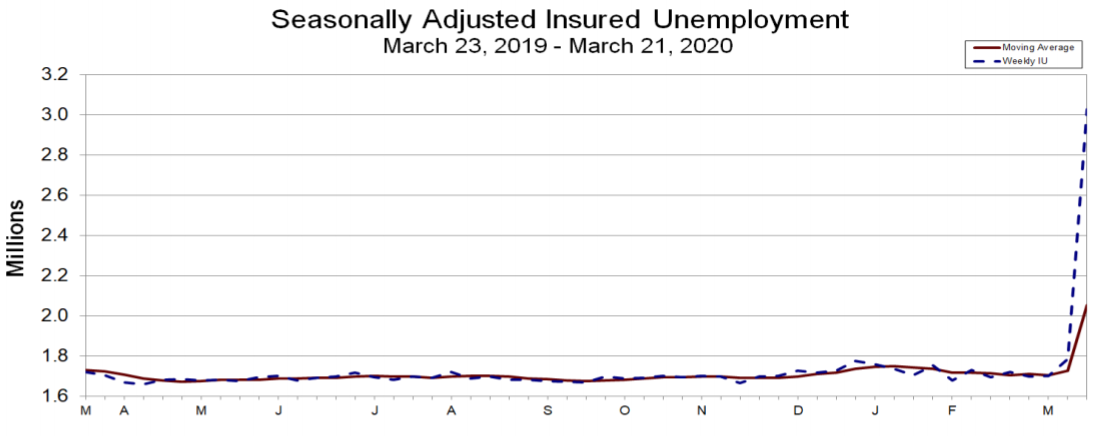Jobless Numbers Cited in Call for Major FCC Lifeline Expansion
Fans of expanding the FCC's Lifeline low-income broadband subsidy program are citing the new unemployment figures--which bring the total to nearly 10 million jobless claims since the pandemic wave first hit those figures hard--as reason enough to do expand Lifeline, including automatic enrollment in the subsidy.
The new figures were 6,648,000 for the week ending March 28, added to the 3,341,000 from the previous week.

Adrianne Furniss, executive director of the Benton Institute for Broadband & Society, pointed out Thursday (April 2) that means over 10 million people most of whom have been told to shelter in place, a place where they will need to get broadband so their kids can learn, so they can look for new jobs if necessary, and so they and their families can connect with healthcare providers and loved ones.
Related: Groups Seeks Massive Lifeline Response from FCC
"Fortunately, the Federal Communications Commission has a tool that can keep these people connected, the Lifeline program," Furniss said. She wants everyone who files for unemployment to be automatically enrolled in the Lifeline program and automatically get the broadband price break, which she says should be $50 per month. The current Lifeline subsidy is $9.25.
Democratic FCC commissioner Jessica Rosenworcel also tied immediate Lifeline expansion to the jobs figures.
“Today’s announcement is a sad indication of the impact of the coronavirus pandemic on the country’s economy and on the livelihood of so many people that find themselves newly out of work," she said. "As the coronavirus places new strains on our economy and households across the country, we need to make sure that no one is left behind when it comes to communications. Now is the time to see how we can modernize our Lifeline program and extend its reach to so many in need. This includes the millions of recently unemployed, seniors, and others at risk at this difficult time. The FCC has done so before in the face of crisis and it’s time to do so again.”
The smarter way to stay on top of the multichannel video marketplace. Sign up below.
The FCC has already taken some steps to boost Lifeline availability, including not dropping suspect subs.
In an order released Tuesday (March 17) the FCC's Wireline Competition Bureau waived the program's re-certification and re-verification requirements for 60 days, which has become something of a standard for the suspension of regular processes.
It also suspended for those 60 days the requirement that participating carriers' representatives register with the Universal Service Fund, which implements the Lifeline subsidy.
Contributing editor John Eggerton has been an editor and/or writer on media regulation, legislation and policy for over four decades, including covering the FCC, FTC, Congress, the major media trade associations, and the federal courts. In addition to Multichannel News and Broadcasting + Cable, his work has appeared in Radio World, TV Technology, TV Fax, This Week in Consumer Electronics, Variety and the Encyclopedia Britannica.

